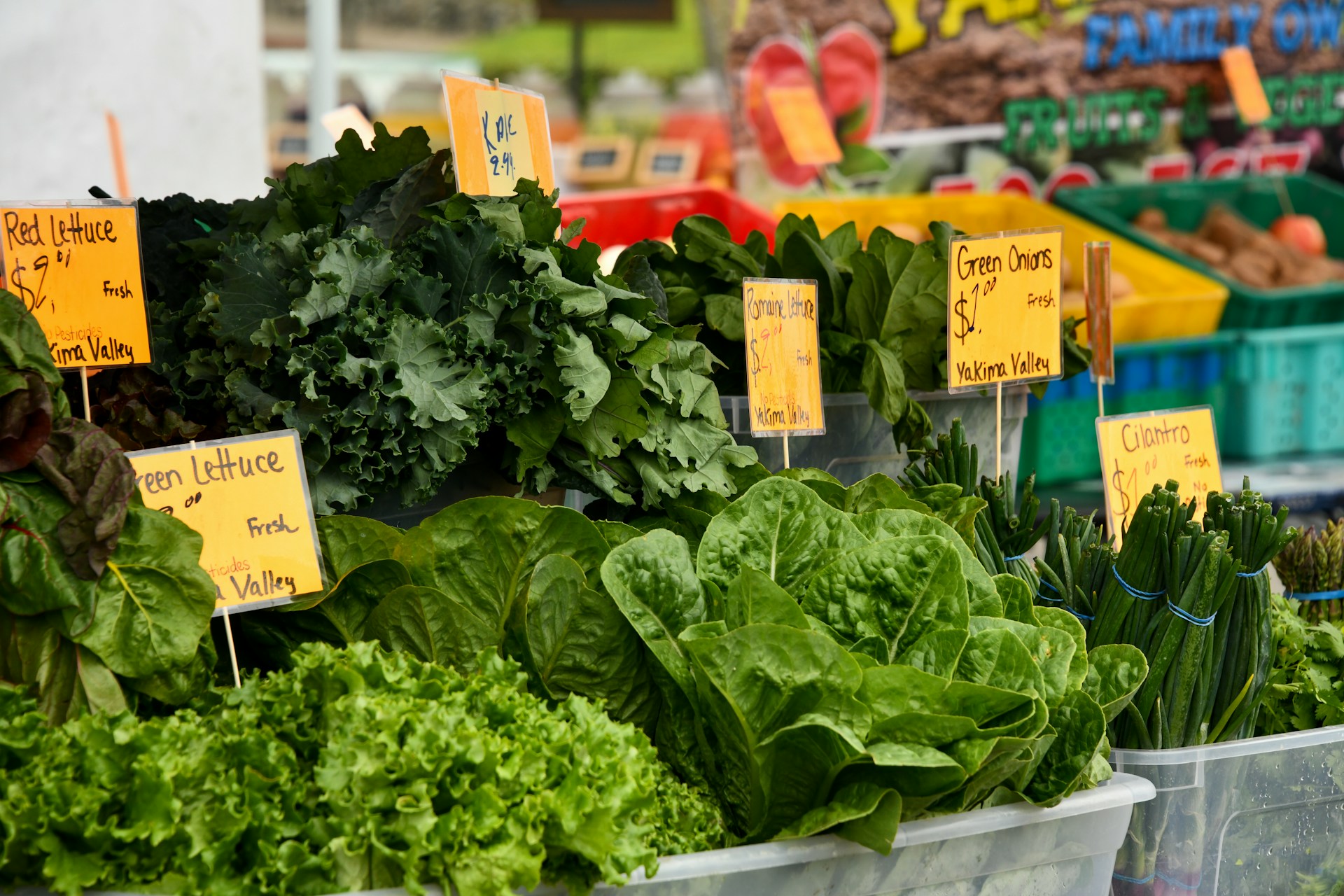As the world turns an increasingly critical eye towards environmental protection, sustainable sourcing in the produce distribution industry has emerged as a crucial priority.
This shift towards sustainability extends beyond mere corporate responsibility; it also offers tangible benefits in cost reduction, efficiency, and reputation enhancement.
In an industry where the supply chain has direct implications on the health of the consumer and our planet, it becomes essential to ensure ethical and responsible sourcing.
For produce distribution companies, the complexity of adopting such practices can be immense.
However, the outcomes can lead the way for substantial qualitative and quantitative improvements.
Let us delve deeper into what sustainable sourcing truly entails and how it can be implemented effectively in the produce distribution industry.
Contents
- Sustainable Sourcing Practices For Produce Distribution
- 1. Prioritize local farm partnerships for fresh produce.
- 2. Implement fair-trade and ethical sourcing policies.
- 3. Limit transport distances to reduce carbon footprint.
- 4. Support Organic and No-Till Farming Methods
- 5. Utilize seasonal produce to minimize energy use
- 6. Employ reusable packaging and delivery systems.
- 7. Encourage biodiversity by sourcing varied produce
- 8. Avoid waste through precise inventory management.
- 9. Conduct regular supplier sustainability assessments.
- 10. Promote regenerative agricultural practices.
- The Bottom Line
Sustainable Sourcing Practices For Produce Distribution
1. Prioritize local farm partnerships for fresh produce.
Local sourcing of fresh produce is a significant initiative contributing to the sustainability of the food distribution industry.
This approach involves building strong partnerships with local farmers who prioritize sustainable farming techniques.
By sourcing from local farms, companies can provide customers with the very freshest produce while also reinforcing local economies.
The proximity of local farms reduces the necessity for long-haul transport, resulting in a significantly reduced carbon footprint.
Local farm partnerships also allow for better traceability of the produce, ensuring that distributors can vouch for their products’ ethical sourcing and organic status.
There’s a rewarding sense of community that results from these local partnerships, as distributors, farmers, and customers mutually benefit.
When distributors commit to sourcing locally-grown produce, they’re making a statement about their desire to support sustainable agriculture, regional economies, and healthier food options.
Establishing local farm partnerships is not simply a matter of purchasing produce from nearby farmers; it requires an understanding of local farming practices and the ability to foster meaningful and lasting business connections.
These partnerships should be rooted in trust, honesty, communication, and a shared commitment to improving food system sustainability.
It’s crucial that distributers understand the seasonality of local produce to accurately anticipate what will be available throughout the year.
This knowledge allows them to create a distribution plan that meets customer’s needs while respecting the natural cycles of the region’s crops.
Strong local farm partnerships also help to spread risk by ensuring that if one farmer suffers a crop failure, others can potentially help fill the gap.
By prioritizing local farm partnerships for produce supply, distributors can demonstrate their commitment to the environment, to local communities, and to the delivery of fresh, healthy food.
>In essence, these partnerships allow for a more robust and resilient food system and contribute to a more sustainable future.
Local farm partnerships hold pivotal roles in the move towards sustainable sourcing practices in produce distribution.
2. Implement fair-trade and ethical sourcing policies.
In the pursuit of sustainable sourcing practices for produce distribution, implementing fair-trade and ethical sourcing policies plays a pivotal role.
These policies ensure that the agriculture producers are compensated fairly for their products and labor, promoting a more balanced, equitable global trade system.
Implementing fair-trade policies imply guaranteeing minimum price standards, discouraging exploitative labor practices, and advocating for the rights of marginalized producers.
Moreover, ethical sourcing goes beyond the economic aspects. It involves a strong commitment to the environmental and social standards in agriculture.
This means acknowledging the producers’ invaluable efforts in maintaining ecosystem health and preparing us for a future with reliable, sustainable food sources.
These policies aim to protect agricultural lands from degradation by endorsing sustainable farming practices through the supply chain.
Nevertheless, combining fair-trade and ethical sourcing leads to sustainable sourcing, a dynamic process that actively supports the improvement and growth of the small-scale agro industry.
By integrating these principles into the modus operandi, produce distributors greatly contribute to the transformation of the global food system.
The policies should be communicated clearly to all partners to prevent misunderstanding and encourage consistency in the application.
Challenging as it seems, the implementation requires patience, dedication, and a strong ethical orientation to ensure maximum effectiveness.
Moreover, it is important to remember that wider fair-trade and ethical sourcing policies are an ongoing process that requires continuous improvement and adaptation.
Policies should undergo regular revisions to correct disparities, expose gaps, and ensure alignment with the evolving norms of sustainability and ethics.
Alongside, produce distributors must ensure these policies are respected and upheld by all parties involved in the production and distribution process.
Frequent and transparent communication plays a central piece in this endeavor, allowing policies to be efficiently carried out in practice.
To conclude, fair-trade and ethical sourcing policies are essential for transforming our food system into one that values fairness, equity, and environmental sustainability.
3. Limit transport distances to reduce carbon footprint.
As part of sustainable sourcing practices for produce distribution, limiting transport distances is crucial.
Sourcing food locally is a major factor which serves to reduce the carbon footprint of distribution significantly.
It is worth noting that the transportation of food contributes to a substantial portion of the world’s greenhouse gas emissions.
More carbon emissions are produced when food has to be trucked, shipped or flown long distances before it reaches the consumer.
Limiting transport distances becomes an effective environmental strategy as it directly reduces the amount of fossil fuel consumed and the related greenhouse gas emissions.
Committing to a local-first purchasing policy helps in achieving this goal.
It encourages the development of relationships with nearby farms and producers.
This also ensures that the produce has spent less time in transit, considerably minimizing the energy expended on refrigeration and storage.
This approach is not exclusive to businesses dealing directly with farms–retailers, restaurants, and individual consumers can significantly contribute by sourcing their produce locally.
The implementation of this strategy also brings about additional benefits.
Not only does it contribute to achieving sustainability goals, but it also supports local economies and promotes the consumption of fresh, seasonal produce.
Regulations and incentives can also be put in place to encourage shorter transport distances.
Understanding and being informed about the origin of the produce encourages accountability in the supply chain, leading to more sustainable decisions.
Encouraging suppliers to bear the environmental impact in mind as they plan their distribution strategies can lead to more far-reaching changes.
In the long run, reducing transport distances is not just an environmentally responsible action, but also one that provides economic benefits in terms of cost savings through reduced fuel usage and improved efficiencies.
4. Support Organic and No-Till Farming Methods
One of the key aspects of sustainable sourcing practices for produce distribution is the support for organic and no-till farming methods.
Organic farming, which rejects the use of synthetic fertilizers and pesticides, is a more environmentally friendly method of cultivation.
It helps to protect ecological balance and biodiversity while prohibiting substances detrimental to the soil and groundwater health.
The soil under organic farming operations usually contains more organic matter and exhibits a more fertile and robust microbiome compared to conventionally farmed soil.
The increased organic matter, in turn, improves the soil’s water-holding ability, making these farms more resilient to drought.
By supporting organic farming, produce distribution companies can help diminish the environmental perils associated with conventional agriculture, which often include toxic runoff, reduction of soil fertility, and the threat to pollinators required for crop production.
Moreover, no-till farming is another method supported in sustainable sourcing practices for produce distribution.
No-till farming also known as zero tillage farming, averts soil disruption which minimizes erosion and helps to store carbon in the soil rather than releasing it into the atmosphere hence, avoiding further contribution to global warming.
This method is promoted for its role in fostering soil health, increasing water retention, and drastically reducing soil erosion, a critical problem in agricultural productions.
Additionally, no-till farming has an economic advantage for farmers as it reduces the need for expensive farm machinery which prepares the land for seeding.
Furthermore, supporting these organic and no-till farming methods aligns with the values of fair-trade and ethical sourcing policies implemented by socially-minded companies.
Embracing these methods ensures the consumers of the company’s commitment to the environment, thus maintaining trust and loyalty to the brand.
In order to support these methods, the produce distribution companies need to work closely with their supply chain, from the growers to the retailers to the end consumers.
Product labeling also plays a crucial role in informing consumers about the environmental benefits of their purchase.
All these methods are part of a wider strategy of making agriculture more sustainable and less intrusive on the natural environment.
The continuous support for organic and no-till farming methods underlines an organization’s commitment and dedication to promoting ecological balance and overall environmental sustainability.
5. Utilize seasonal produce to minimize energy use
One of the most effective methods to sustainably source produce while minimizing energy use is by utilizing seasonal produce.
When we choose to consume seasonal produce, we actively support a system that is more in harmony with nature.
Produce that is harvested during its natural growth season requires less artificial assistance, like excessive use of chemical supplements or energy-guzzling hothouses.
Emphasizing seasonal produce also discourages the excessive transportation of goods from regions where a product is in-season to places where it’s not.
Such actions contribute significantly to the overall carbon footprint of the distribution network due to fuel consumption and the exhaust of delivery trucks.
Over-reliance on out-of-season produce often necessitates climate-controlled storage facilities or long-distance shipping routes, both of which lead to excessive energy consumption and carbon emissions.
By sourcing locally and seasonally, distribution companies can reduce the demand for such harmful practices.
Local and seasonal sourcing also encourages a cycle of consumption that promotes biodiversity and ecological balance.
The more we diversify our diets according to the seasons, the more we preserve various plant species and their associated ecosystems.
In addition, seasonal produce tends to be richer in nutrients because it has been harvested at peak ripeness and hasn’t lost its quality during transportation or storage.
However, to effectively capitalize on the benefits of seasonal sourcing, producers, distributors, and consumers alike must be willing to adapt their expectations and diets according to the time of the year.
Restaurant menus, grocery store offerings, and public dietary recommendations should emphasize seasonal item.
This approach would expect significant adjustments in many areas of the food and distribution industry but would result in a more sustainable, efficient, and ecologically sympathetic system.
It is also important to remember that the definition of ‘seasonal’ can vary greatly depending on one’s geographical location and climate, which may pose challenges for larger-scale implementation.
Nonetheless, the push towards utilizing seasonal produce in the sourcing and distribution of produce represents a major stride in the right direction towards sustainable sourcing practices.
6. Employ reusable packaging and delivery systems.
In the journey towards more sustainable sourcing practices for produce distribution, an integral part is to consider the role of packaging and delivery systems.
Packaging, in many cases, can be a significant source of waste and environmental pollution, due to extensive use of single-use plastics and other non-recyclable materials.
Thus, it is essential for companies to strive for solutions that minimize waste and damage to the environment.
One such solution lies in the implementation of reusable packaging for produce distribution.
This practice could substantially reduce the amount of waste produced, considering the high volume of produce that is transported and consumed daily.
In this context, the concept of reusable packaging includes a broad range of elements, from boxes and crates to bags and even wrapping materials.
Each of these could be designed in a way to be used many times before reaching the end of its lifespan and, subsequently, should be easily recyclable or compostable.
This means that even after numerous reuses, these materials would not end up in a landfill, instead, they would be repurposed or decomposed naturally.
Moreover, the utilization of reusable delivery systems is another aspect that can contribute greatly to the overall sustainability of sourcing practices.
Delivery systems refer to the vehicles used for transportation, and their sustainability could be enhanced by investing in more energy-efficient vehicles or even electric or hybrid ones, thus reducing their carbon emissions.
Moreover, planning efficient delivery routes to minimize fuel consumption is another strategy that can lead to substantial environmental benefits.
All these measures combined could result in a significant reduction in the carbon footprint of the distribution process as well as considerable cost savings in the long run.
However, the transition to reusable packaging and delivery systems is not without challenges.
These difficulties include the initial investment required for replacing old materials and vehicles, the difficulty of convincing suppliers and customers to adopt these changes, and the need for frequent maintenance and proper handling of materials.
Despite these challenges, the move towards reusable packaging and delivery systems is a necessary step in the progression towards more sustainable sourcing practices in the produce distribution industry.
7. Encourage biodiversity by sourcing varied produce
One of the primary strategies in ensuring sustainable sourcing practices in produce distribution is to encourage biodiversity through sourcing varied produce.
Biodiversity plays a critical role in the health and resilience of agricultural systems.
It enriches soil nutrients, aids in natural pest control, promotes pollination activities, and reduces the need for chemical inputs.
By sourcing a variety of produce, companies can support biodiversity at the agricultural stage itself.
When a wide array of fruits and vegetables are grown in a single farm or a specific region, it can significantly contribute to the enhancement of local biodiversity and the strengthening of ecosystems.
More so, varied produce sourcing ensures constant demand for diverse crops and encourages farmers to cultivate a range of produce rather than sticking to monoculture farming.
This not only promotes biodiversity but also ensures a steady income for farmers, a critical factor in making agriculture a sustainable livelihood.
Another critical aspect to consider is that sourcing different types of produce can lead to healthier soil.
Soil quality can be significantly enhanced when multiple crops are grown in a cycle, as it prevents nutrient depletion often caused by monoculture practices.
Biodiverse farming also promotes more resilient agricultural environments that can better withstand climate change impacts and other environmental challenges.
However, to actively encourage biodiversity, it’s not just enough to source varied produce; companies should also consider their sourcing patterns and practices.
For instance, regular, predictable, and fair sourcing contracts with farmers can give them the confidence to diversify crops, knowing well that there is a demand for their produce.
Produce distributors should also consider long-term partnerships with smallholder farmers who practice diversified farming, supporting their livelihoods and promoting biodiversity simultaneously.
Participating in or initiating consumer awareness campaigns about the benefits of diverse diets can also drive demand for varied produce, which in turn encourages more biodiverse farming.
In essence, through strategic sourcing practices, the produce distribution sector can significantly contribute to enhancing agricultural biodiversity, improving the resilience of farming systems, and fostering more sustainable food systems.
8. Avoid waste through precise inventory management.
Within the context of sustainable sourcing practices for produce distribution, precise inventory management stands as a paramount concern.
Typically, managing inventory means tracking and managing the quantity and quality of the products being sourced.
Effective inventory management can help in reducing unnecessary waste by minimizing the likelihood of over-ordering or under-ordering.
Troubles associated with over-ordering often lead to significant waste when excess produce cannot be sold before it spoils.
On the other hand, under-ordering may lead to a shortage of products, potentially damaging relationships with retailers who depend on consistent product availability.
By accurately gauging the demand and supply, businesses can order the exact quantity of produce needed, significantly reducing waste.
Technology can be leveraged to implement sophisticated inventory management systems that can forecast demand accurately.
These systems can calculate optimal ordering points to maximize sales and minimize waste.
This helps businesses save money that would have been lost due to spoilage, and also contributes to more sustainable operations by minimizing waste.
Moreover, managing the inventory accurately also ensures that the produce doesn’t sit in storage for long, reducing the chances of it becoming overripe or spoiling.
Another strategy to prevent waste is to work with local farms who would be willing to take back unsold produce for composting, contributing to a closed-loop system.
This strategy not only reduces waste, but also feeds into regenerative agricultural practices.
Work in close association with suppliers to manage and plan inventory replenishment cycles is paramount, reduce transportation costs and carbon emissions.
A clear communication channel can also aid in this process, helping to alleviate some of the uncertainties that contribute to waste.
It’s not just about managing quantities, inventory management should also involve managing product’s quality, ensuring that the freshest produce is sold first.
This is often referred to as a First In, First Out inventory management strategy that can help to maximize the shelf life of the products and minimize waste.
In conclusion, avoiding waste through precise inventory management is more than just counting produce, it is a comprehensive strategy involving tech systems, supplier communication, and waste reduction efforts for sustainable sourcing practices.
9. Conduct regular supplier sustainability assessments.
Conducting regular supplier sustainability assessments is a key activity for companies seeking to adhere to sustainable sourcing practices for produce distribution. This action involves regularly evaluating the environmental impact and sustainability practices of the suppliers from whom companies procure their produce.
The purpose of these assessments is to ensure that these suppliers adhere to ethical and sustainable practices in their operations. This could include, for example, employing energy-efficient machinery, minimizing water use, avoiding harmful pesticides and respecting biodiversity.
These regular assessments not only help companies to ensure they are working with responsible suppliers, but also provide opportunities to identify areas of improvement and work with suppliers to become more sustainable.
Additionally, if a supplier is not meeting the company’s sustainability standards, these assessments provide the evidence needed to make the difficult decision to seek alternative providers.
Surprisingly, these assessments can have a positive impact on the suppliers as well. Through this process, suppliers can get valuable insights into their own operations, identify areas where they could save costs, and improve their sustainability credentials, making them more competitive in the market.
It is important to note that these assessments need to be both thorough and regular to be effective. A one-off assessment will not provide the ongoing monitoring needed to continuously improve a supplier’s sustainable practices.
A comprehensive supplier sustainability assessment should include an evaluation of a supplier’s waste management practices, energy use, water use, impacts on biodiversity, labor practices and more. The company carrying out the assessment should have clear sustainability standards against which to measure suppliers.
These standards should be transparent and fair, and it is important to ensure suppliers have a clear understanding of what is expected of them and how they will be assessed.
However, conducting these assessments is not always straightforward. Many companies lack the in-house expertise to conduct exhaustive sustainability assessments. Additionally, it involves a significant time commitment, and companies with numerous suppliers may struggle to evaluate every single one on a regular basis.
In these instances, companies might need to resort to external consultants or third-party certification bodies. These organizations can provide the necessary expertise and resources to conduct in-depth supplier assessments and ensure these are carried out in a fair and transparent manner.
Moreover, while these third-party evaluations can be an additional expense for the company, they offer an impartial perspective and can lend greater credibility to the process. This could prove to be beneficial in the long run.
In conclusion, conducting regular supplier sustainability assessments is an essential component of sustainable sourcing practices for produce distribution. It helps ensure that the environmental impact of produce sourcing is minimized, suppliers are held to high ethical standards, and continuous improvements are made to enhance sustainability.
Through concerted and thorough efforts in conducting these regular assessments, companies can ensure that their produce distribution chain is not just efficient and effective, but also ethically responsible and sustainable.
10. Promote regenerative agricultural practices.
Regenerative agriculture is a method of farming that seeks to rehabilitate and enhance the entire ecosystem of the farm by focusing on the health of the soil. This goes well beyond sustainable farming practices.
The objective of regenerative agriculture is to capture carbon in the soil and use our farmland to tackle climate change in addition to producing nutrition-dense food.
By sourcing from regenerative agriculture, distributors can drastically reduce their carbon footprint and contribute positively to the environment.
Regenerative agriculture, in essence, seeks to follow nature’s lead — creating fertile, life-nurturing ecosystems that are resilient to climate change and other stresses.
Regenerative agriculture practices can aid in cooling the planet by reducing carbon dioxide levels in the atmosphere and adding it back into the earth, where it enhances soil health, water quality and biodiversity.
Farming practices such as cover cropping, crop rotation, composting, and no-till farming are all key aspects of regenerative agriculture.
It is critical to understand, however, that implementing these farming practices is not a one-size-fits-all solution.
Every farm has different needs and challenges, and adapting these practices to each individual situation is the key to making a real impact.
From a sourcing perspective, it is crucial to understand that partnering with regenerative farms is a long-term investment.
Because it takes time for these practices to show significant results, it’s not something that will bring immediate improvements to a company’s bottom line.
However, in the longer term, sourcing produce from regenerative farms can bring about a range of benefits.
These can include improved product quality, increased crop resilience, and the ability to use the ‘regenerative’ label as a marketing tool.
Additionally, it can generate good public relations for the company, as consumers are becoming increasingly aware of and concerned about climate change and the impact of industrial agriculture.
In conclusion, while promoting regenerative agriculture practices requires an initial investment and a strategic, long-term vision, it can offer compelling benefits for a produce distribution company.
Not only can it help combat climate change, improve the health of ecosystems and enhance food quality, but it can also create an opportunity to tap into a growing consumer trend.
As such, it represents a powerful way for businesses in the produce distribution sector to align their operations with strong sustainability principles and outcomes.
The Bottom Line
Sentences long.
Our future and the sustainability of our environment heavily rely on the course we set for our food industry.
Through supporting local farmers, enforcing ethical sourcing, reducing transport distances, and endorsing organic farming practices, we can minimize our carbon footprint.
The use of seasonal produce, reusable packaging, and accurate inventory management can significantly curtail waste while promoting energy efficiency.
Emphasizing on biodiversity and conducting sustainability assessments further strengthens the conviction for a healthier planet.
Lastly, endorsing regenerative agricultural practices ensures the preservation of our soils, and in turn, our future.




